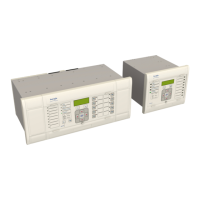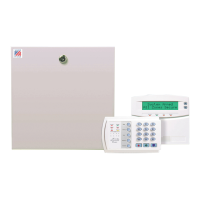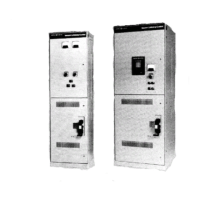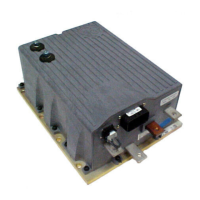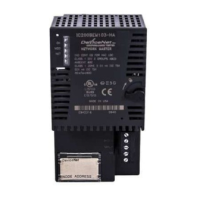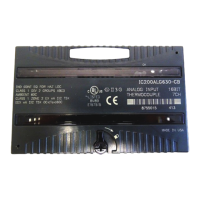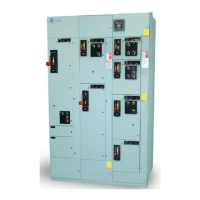General line applications
Use any setting between 0.2 and 1.
7.10 DELTA DIRECTIONAL ELEMENT SETTING GUIDELINES
For the Delta directional element, the relay characteristic angle (RCA) settings must be based on the average
source + line impedance angle for a fault anywhere internal or external to the line. Typically, the Dir Char Angle is
set to 60°, as it is not essential for this setting to be precise. When a fault occurs, the delta current will never be
close to the characteristic boundary, so an approximate setting can be applied.
7.10.1 DELTA THRESHOLDS
For best performance, set the Dir. I Fwd current threshold at 10 to 20% In. This ensures detection of all fault types
if the fault current contribution to an earth fault at the remote end of the line generates at least this amount of
delta. To select the correct Delta V Forward setting, refer to the following table which compares SIR (Source to Line
impedance ratio) with recommended Delta V Forward setting (DV Fwd).
Lowest SIR ratio of the system
Recommended DV Fwd (as a % of Vn)
>= 0.3 4%
>= 0.5 6%
>= 1 9%
>= 2 13%
>= 3 15%
>= 5 17%
>= 10 19%
25 – 60 21%
The reverse fault detectors must be set more sensitively, as they are used to invoke the blocking and current
reversal guard elements. We suggest that all reverse detectors are set at 66 to 80% of the setting of the forward
detector, typically:
● Dir. V Rev = Dir. V Fwd x 0.66
● Dir. I Rev = Dir. I Fwd x 0.66
Due to the implementation method, Deltas are present only for 2 cycles on fault inception. If any distance elements
are enabled, these will automatically allow the delta forward or reverse decisions to seal-in, until such time as the
fault is cleared from the system. Therefore as a minimum, some distance zone(s) must be enabled in the DISTANCE
SETUP column as fault detectors. It does not matter what time delay is applied for the zone(s). This can either be
the typical distance delay for that zone or set to ‘Disabled’ in the SCHEME LOGIC column, if no distance tripping is
required. As a minimum, Zone 3 must be enabled, with a reverse reach such as to allow seal-in of Dir. Rev, and a
forward reach to allow seal-in of Dir. Fwd.
The applicable reaches would be:
● Zone 3 Forward: Set at least as long as a conventional Zone 2 (120-150% of the protected line)
● Zone 3 Reverse: Set at least as long as a conventional Zone 4, or supplement by assigning Zone 4 if a large
reverse reach is not preferred for Zone 3.
We generally advise a Mho characteristic in such starter applications, although quadrilaterals are acceptable. As
the Mho starter is likely to have a large radius, we strongly advise applying the Load Blinder.
Chapter 7 - Distance Protection P543i/P545i
200 P54x1i-TM-EN-1
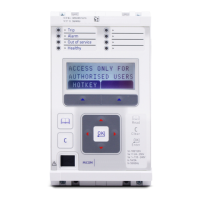
